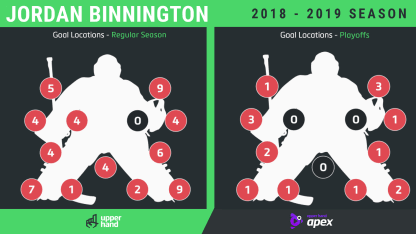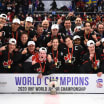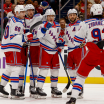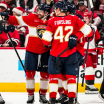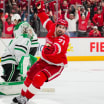Sharp angles:The numbers from the first round aren't nearly as glaring as Binnington, with three of 12 goals coming off plays where post-integration habits were a factor, but it fits a trend for Bishop. Plays from below the bottom of the face-off circles and behind the net that forced him into and off his posts accounted for 18 of the 87 goals (22.9 percent) he allowed in the regular season, including 3.5 percent on shots from below the goal line. In addition to getting beat cleanly over the short-side shoulder from just above the goal line, Bishop got caught using reverse-VH, a sharp-angle technique, on plays as high as the face-off dot, leaning into the post and delaying his movements off it on passing plays
Active stick: Bishop is active with his stick, breaking up plays through his crease and even swinging it well past his posts to disrupt plays below the goal line. He used it effectively against the Predators, but being aware of it, and getting pucks past it, can leave him off balance or extended past his posts on low-high plays, which accounted for 22 (25.3 percent) of the goals he allowed, including five that started with him swinging and missing the stick.
High glove? Not so much:The highest number on Bishop's regular-season goal chart was high glove, and his mid- and high-glove total of 25 percent was slightly above the average, but that number was deceiving going into the playoffs because it isn't a save percentage. So the total may be a product of the quantity and quality of shots targeted to the glove side, especially since Bishop has long been known for a good glove hand. More telling was that of 19 clean-shot goals, with Bishop set on the shooter, three went in high glove compared to eight on the blocker side, a trend that played out in the first round too.


